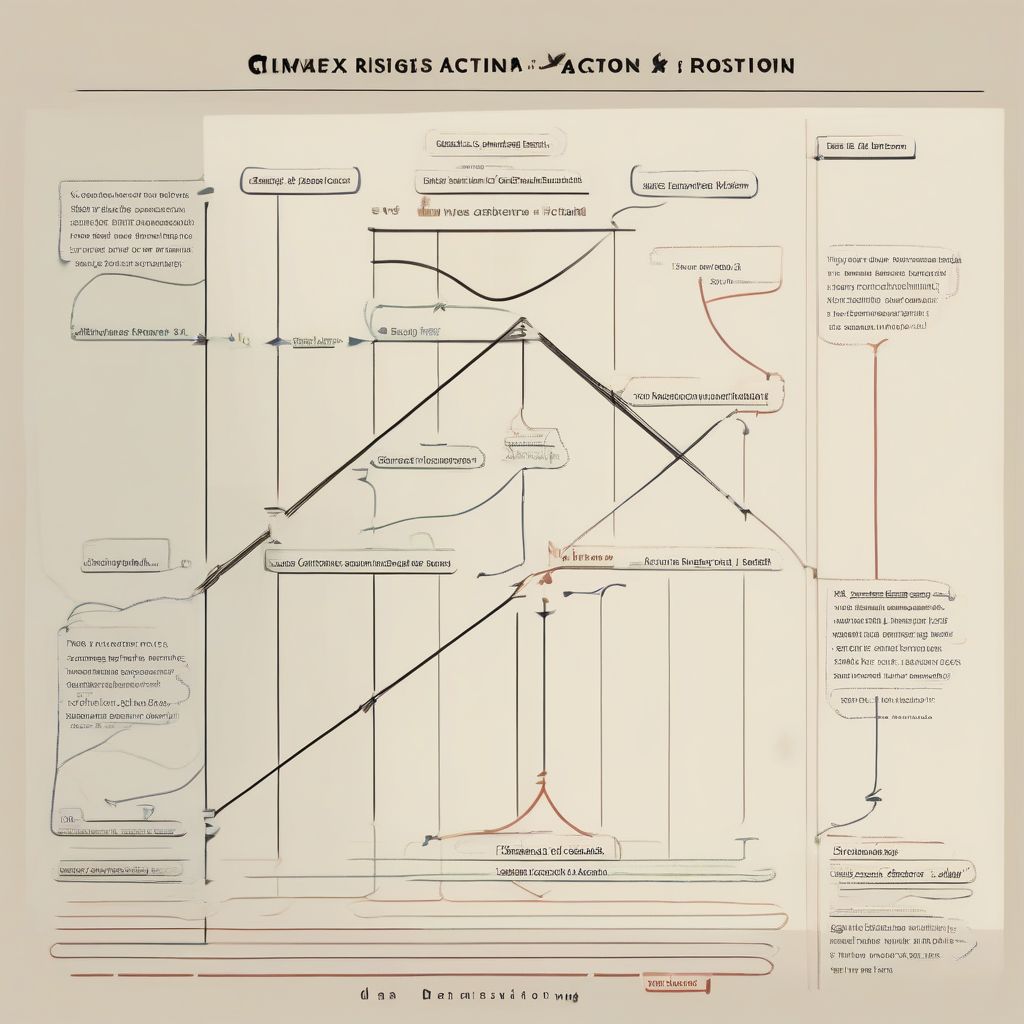Have you ever finished a captivating novel and wondered how the author crafted such a compelling narrative? Deconstructing plot structures of famous novels allows us to understand the magic behind storytelling and appreciate the artistry of weaving words into unforgettable tales. It’s like peeking behind the curtain to see the gears turning, the intricate machinery of plot driving the story forward. This article will equip you with the tools to analyze and understand the plot structures of your favorite books, deepening your appreciation for literature and even empowering you to craft your own compelling narratives.
Understanding the Fundamentals of Plot Structure
Most stories follow a basic plot structure, often visualized as a pyramid or arc. This structure typically includes:
Exposition: Setting the Stage
The exposition introduces the characters, setting, and initial conflict. Think of it as laying the groundwork for the story. In Jane Austen’s Pride and Prejudice, the exposition establishes the Bennet family’s social standing and the importance of finding suitable husbands for the daughters.
Rising Action: Building Tension
The rising action introduces complications and obstacles, increasing the tension and stakes. In Pride and Prejudice, this involves the arrival of Mr. Bingley and Mr. Darcy, sparking romantic entanglements and social drama.
Climax: The Turning Point
The climax is the peak of the story, the moment of highest tension and the turning point of the narrative. In Pride and Prejudice, a pivotal moment is Elizabeth Bennet’s vehement rejection of Mr. Darcy’s first proposal.
Falling Action: Untangling the Knots
The falling action shows the consequences of the climax and begins to resolve the conflict. This might involve misunderstandings being clarified or relationships shifting in Pride and Prejudice.
Resolution: The Final Outcome
The resolution, or denouement, ties up loose ends and provides closure. It shows the final outcome of the story, like the eventual marriages of the Bennet sisters.
 Deconstructing Plot in Famous Novels
Deconstructing Plot in Famous Novels
Deconstructing Famous Novels: Examples and Techniques
Analyzing specific examples helps illustrate the power of plot deconstruction. Consider these approaches:
Focusing on Conflict
Identify the central conflict driving the narrative. Is it internal or external? In To Kill a Mockingbird by Harper Lee, the central conflict revolves around racial injustice and prejudice.
Mapping the Character Arcs
Trace the development and transformation of key characters throughout the story. How do their experiences shape their choices and actions? Scout Finch, the narrator of To Kill a Mockingbird, matures significantly as she witnesses the trial of Tom Robinson and grapples with the complexities of prejudice.
Identifying Key Plot Points
Pinpoint the crucial moments that propel the narrative forward. These could be turning points, revelations, or significant decisions. Atticus Finch’s decision to defend Tom Robinson despite social pressures is a key plot point that shapes the narrative of To Kill a Mockingbird.
Analyzing Narrative Techniques
Consider the author’s use of foreshadowing, symbolism, and other literary devices to enhance the plot. The mockingbird itself serves as a powerful symbol of innocence and vulnerability.
Exploring Theme and Message
Reflect on the underlying themes and messages conveyed through the plot. To Kill a Mockingbird explores themes of racial prejudice, social injustice, and the importance of empathy and understanding.
Applying Deconstruction to Your Own Writing
Understanding plot structure is not only beneficial for analyzing existing literature but also for crafting your own stories. By understanding the elements of a compelling narrative, you can create stories that resonate with readers.
Brainstorming and Outlining
Use plot structure as a framework to brainstorm ideas and outline your story. This will help you create a cohesive and engaging narrative.
Creating Compelling Characters
Develop characters with clear motivations, strengths, and weaknesses. Their interactions and decisions will drive the plot forward.
Crafting Engaging Conflicts
Introduce conflicts that create tension and raise the stakes for your characters. These conflicts can be internal, external, or a combination of both.
Building to a Climax
Structure your rising action to build towards a powerful and impactful climax. This should be the turning point of your story, where the protagonist faces their greatest challenge.
Providing Resolution and Closure
Tie up loose ends and offer a satisfying resolution. Leave your readers with a sense of completion and a lasting impression.
Expanding Your Toolkit: Resources for Plot Deconstruction
Numerous resources can aid in your journey of plot deconstruction. Consider exploring:
- Literary criticism: Scholarly articles and books offer in-depth analysis of famous novels and their plot structures.
- Online writing communities: Connect with fellow writers and discuss plot techniques, share feedback, and learn from each other’s experiences.
- Writing workshops and courses: Formal training can provide structured guidance and expert feedback on your own writing.
Conclusion
Deconstructing plot structures in famous novels is a powerful tool for enhancing literary appreciation and improving your own writing. By understanding the underlying framework of storytelling, you can unlock the secrets behind captivating narratives and craft your own compelling tales. So, pick up your favorite novel, grab a pen and paper, and start exploring the intricate machinery of plot. What insights will you uncover? Share your thoughts and discoveries in the comments below, and let’s delve deeper into the fascinating world of storytelling together.



